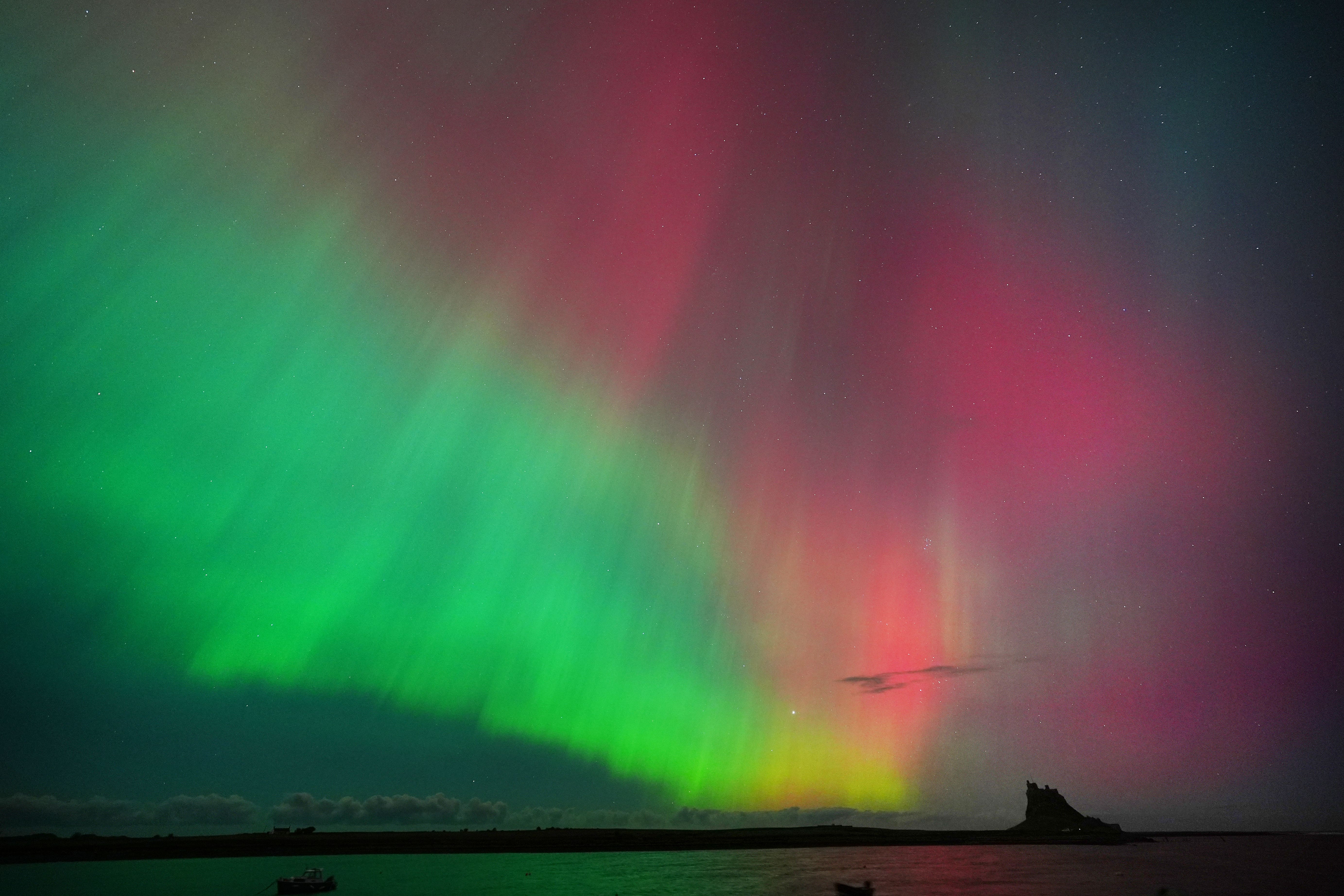Parts of UK could enjoy Northern Lights on New Year’s Eve, says Met Office
Areas of Scotland could have the ‘best chance’ of seeing the phenomenon also known as the aurora borealis.

Your support helps us to tell the story
From reproductive rights to climate change to Big Tech, The Independent is on the ground when the story is developing. Whether it's investigating the financials of Elon Musk's pro-Trump PAC or producing our latest documentary, 'The A Word', which shines a light on the American women fighting for reproductive rights, we know how important it is to parse out the facts from the messaging.
At such a critical moment in US history, we need reporters on the ground. Your donation allows us to keep sending journalists to speak to both sides of the story.
The Independent is trusted by Americans across the entire political spectrum. And unlike many other quality news outlets, we choose not to lock Americans out of our reporting and analysis with paywalls. We believe quality journalism should be available to everyone, paid for by those who can afford it.
Your support makes all the difference.People in some parts of the UK may have a chance of seeing the Northern Lights on New Year’s Eve, the Met Office said.
People in the east of Scotland, north-east England and Northern Ireland could be treated to sightings of the natural phenomenon, also known as aurora borealis, as they celebrate the new year.
A spokesman said areas of Scotland should have the “best chances” at seeing the Northern Lights.
Met Office spokesman Grahame Madge told the PA news agency: “Although the solar conditions are set fair to see the northern lights, unfortunately the meteorological conditions are not that helpful.
“Scotland should provide the best chances but with unsettled conditions dominating it will be hard to get a guaranteed view.
“Perhaps the best areas may be those along the eastern coast of Scotland.”
The forecaster said cloud coverage could “hamper any sightings” but added there could be spells of clear skies from about 6pm to 9pm on Tuesday.
Some areas may only see the lights temporarily after the weather service issued an amber warning for rain in the Highlands and Moray until 5pm and a yellow warning for rain and snow for parts of northern and western Scotland.
The auroras, which are most commonly seen over high polar latitudes but can spread south, are chiefly influenced by geomagnetic storms which originate from activity on the Sun.
The sun works on a cycle of about 11 years called the solar cycle – with peak sunspot activity on the surface of the Sun referred to as solar maximum.
Sunspots give the potential for Earth-directed releases of large bursts of energy, called coronal mass ejections, which can lead to aurora visibility.
Aurora displays occur when charged particles collide with gases in the Earth’s atmosphere around the magnetic poles.
As they collide, light is emitted at various wavelengths, creating colourful displays in the sky.